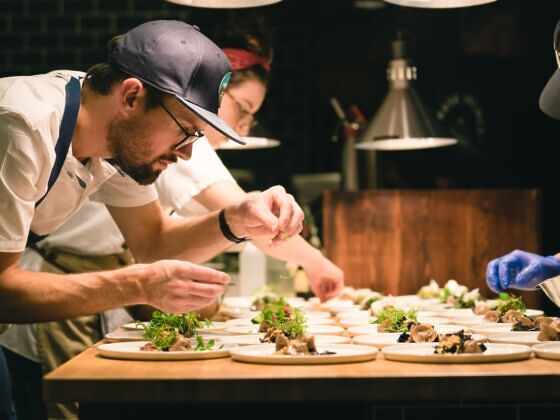Thirty years ago, the “food scene” in Iowa existed in diners, spaghetti joints, supper clubs, and steakhouses. It was all prime rib off the cart, perfectly fried onion rings, chicken-fried steak, and French silk pie. If nothing else, it was visceral: You could try and hold together a sloppy Maid-Rite with no success; you could pace yourself, gratefully, through Pink Squirrels and 20-oz steaks; you could order a billboard-sized tenderloin — the only size available — and relish the leftovers for days.
And all that, actually, was quite good. But it wasn’t necessarily surprising; it was more like gathering around the same dinner table your family has circled for generations. It was your grandma’s best cherry pie, every day of the week.
Things have changed in Iowa.
Sure, you can still get your tenderloin fix when the mood strikes, you can still find complimentary appetizers to test your willpower, but now you’re also going to come across someone from a new generation of gastronomes quietly experimenting with what’s in their backyard. The foodies, chefs, and entrepreneurs listed below are some of those taking the richest farmland in the world and creating dishes that would (and do) make James Beard nod. Here’s where to go.
The Proof
While every Iowa town has somewhere worth sitting down and spreading that napkin, here are nine chefs — and the restaurants they head — who are raising the bar, putting Iowa smack-dab in the center of the country’s foodie map.
Kevin Scharpf | Brazen, Dubuque
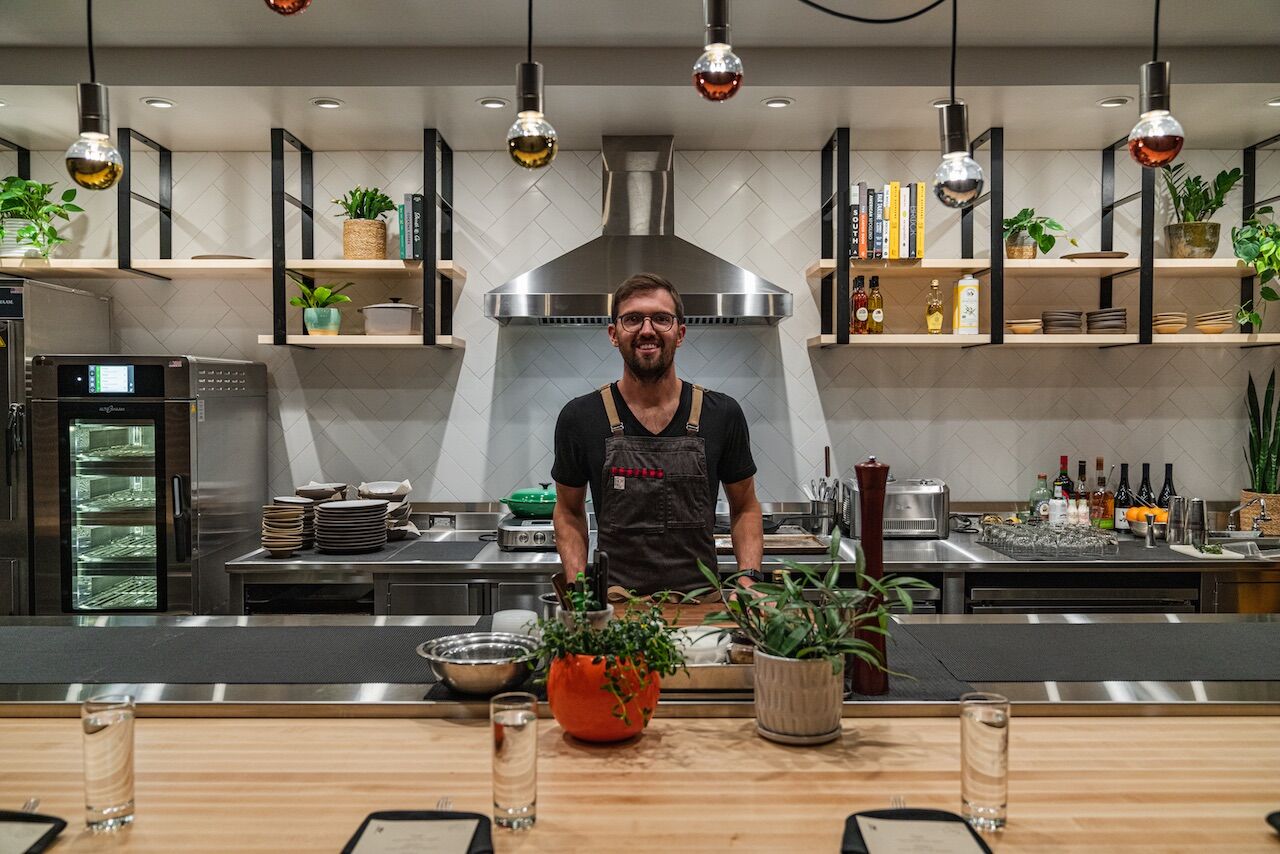
Photo: Gigantic Design Co./Brazen
The Historic Millwork District, a cluster of stunning 20th-century warehouses adjacent to downtown Dubuque, has an unmissable dining experience hiding in all that brick: Brazen Open Kitchen, led by head chef Kevin Scharpf. A competitor on Bravo’s Top Chef — just one of many of his impressive accolades — Scharpf shines brightest in his small plates, with a “come as you are” elegance uniting his menu.
Always featuring seasonally fresh, local ingredients (there are no freezers at Brazen!), his simple dishes are done right, from leek fondue and vegan gnudi to fried chicken and pork shoulder with chile, white bean, onion, apple, and cilantro. (And by “done right,” we mean James Beard-nominated.)
Sam & Phoebe Charles | Rodina, Cedar Rapids
In the Czech Village/NewBo District of Cedar Rapids, Rodina calls its menu “Midwest comfort food” — but in true Midwestern fashion, that’s too humble. A rare delight, Rodina will bring hot baked madeleines to your table, plate you a cast-iron tofu you didn’t know was possible, and present a vegetarian chorizo dip that will leave you simultaneously transfixed, perplexed, and grateful.
Rodina translates to “family” in Czech, and mementos from the Charles’ childhoods are scattered across the restaurant. The bread is baked by a local friend (the James Beard-nommed Aaron Hall), while their ingredients are sourced from local farming families, often just 10 to 15 minutes away. This is “Midwest comfort food” in its newest, truest, and loveliest definition.
Benjamin Smart | Big Grove Brewery, Iowa City
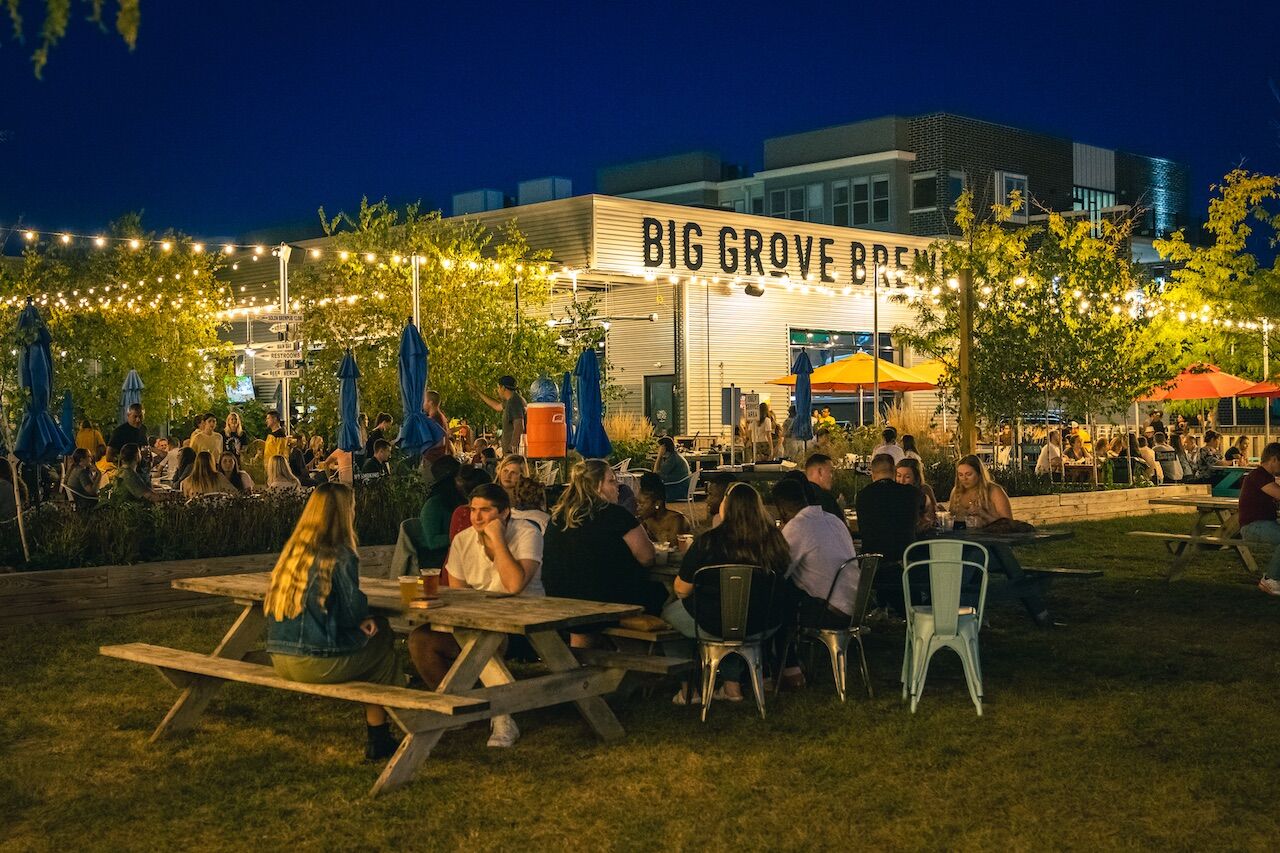
Photo: Rob Miller/Big Grove Brewery
On the outside, Big Grove in Iowa City is a pretty classic American brewery. Inside, meanwhile, Benjamin Smart and his team experiment with off-the-wall cooking methods and master niche techniques. One of Plate Magazine’s chefs to watch, Smart utilizes his experience at Seattle’s Herbfarm to flex his culinary muscles over Big Grove’s exquisite salads and house-made pizzas and flatbreads. One of his go-to ingredients? Alliums. (Google it!)
Here, award-winning ales and IPAs, cornhole tournaments, river views, and live music on the dog-friendly patio are paired with dishes you don’t typically associate with brewpubs — think smoked salmon with house-made pancetta and cous cous or flat-iron ribs with buttermilk mashed potatoes and glazed parsnips.
Suman Hoque | HoQ Restaurant, Des Moines
Bangladesh-born and Switzerland-educated, Suman Hoque helped turn the ultra-hip East Village in Des Moines into what it is today. Some 90% of all ingredients used at HoQ Restaurant come from Iowa farms, resulting in a menu that evolves roughly every six weeks.
“Local farms, global flavor” is exactly what diners will delight in here, with dishes like grass-fed goat with kalijira rice, apricot jam, and wasabi yogurt or acorn pudding with made-in-Iowa La Quercia chipped ham and microgreens. Rivaling the uncommon dishes, the combination of concrete and white tablecloths creates a surprisingly stylish ambiance. Definitely grab a reservation for this one.
Oscar Hernandez | 712 Eat & Drink, Council Bluffs
A hundred years ago, the Union Pacific Railroad had to decide between Omaha and across-the-river Council Bluffs, and Omaha got to chug full steam ahead. But Council Bluffs is now coming into its own, with 712 Eat & Drink helping anchor its foodie renaissance.
Headed by Oscar Hernandez — formerly of Omaha’s Pig & Finch and The Market House — the restaurant stays true to its 712 roots (that’s the area code) but with a modern twist. Think fried pickles with house-made, herbed creme fraiche or tater tots with braised pork belly, fontina, and ancho-chili mayo. Sit across from the 44-foot mural by Gerard Pefung to get the full 712 experience.
Tim Howard | Cafe Dodici, Washington
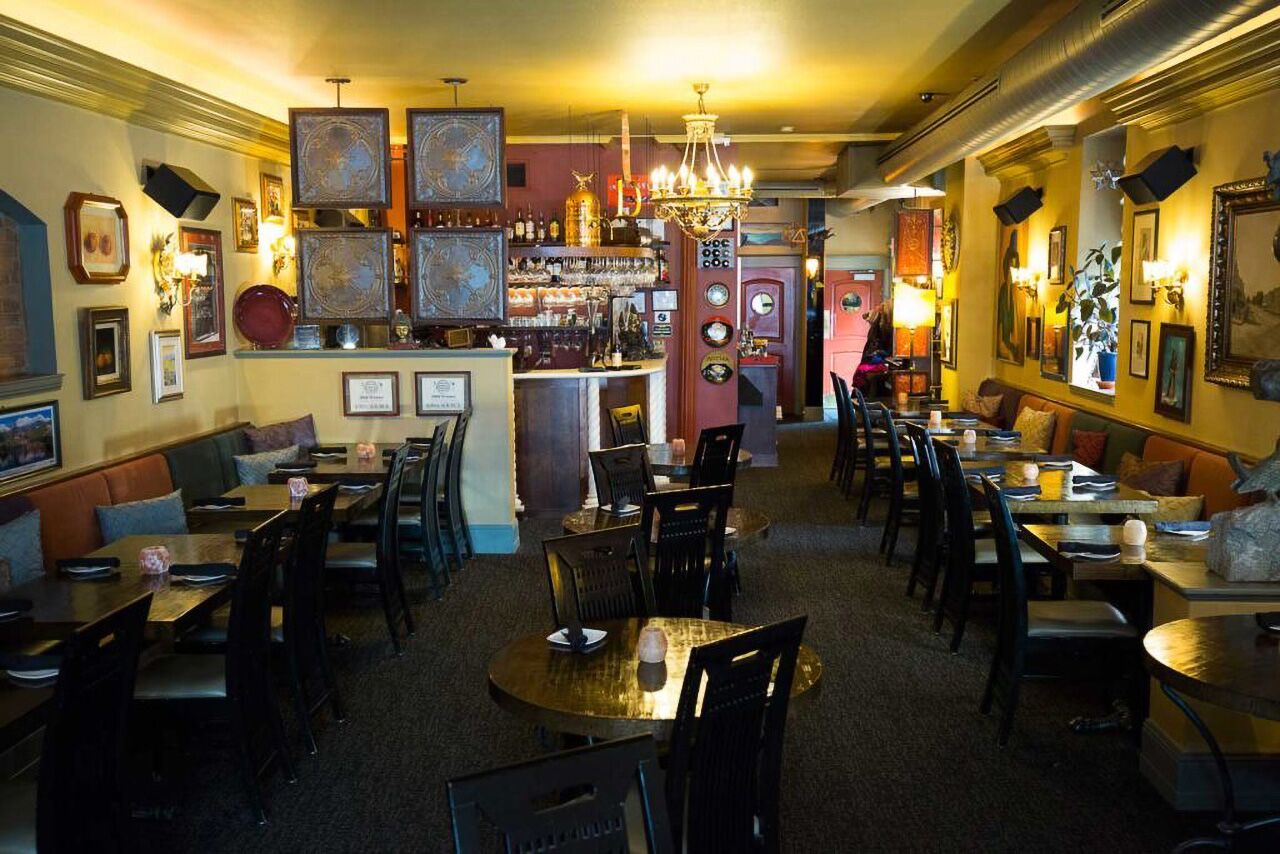
Photo: Linda Drish/Drish Photography/Cafe Dodici
The southeastern community of Washington, population 7,000, proves Iowa’s food scene isn’t limited to a few lucky big cities. Case in point: Cafe Dodici, co-owned by Lorraine Williams and Alessandro Scipioni from Pesaro, Italy. The first thing you’ll notice on entering is the global decor — paintings from Iowans hang alongside those of international artists, chandeliers come straight from Italy, and the rest? An eclectic mix of carpet and brick, maps and statues, hiding inside a small town’s 20th-century main drag.
But then you’ll get to the food. Head chef Tim Howard started at Cafe Dodici 14 years ago as a dishwasher — now, he’s plating up ball tip penne with crema di silken tofu and pistachio bruschetta, he’s whipping mascarpone inside his goat cheese torta. Yes, you could order a burger, but we wouldn’t recommend passing up the Iowa-Italian masterpieces on the menu.
Jesse Miller and Scott Salem | Table 32, Sioux City
Housed inside an old creamery — a stunning brick juggernaut in Sioux City’s up-and-coming Virginia Square — Table 32 repurposed its digs to repurpose Midwestern cuisine. Its guests will sit down to a menu that emphasizes local ingredients and features plates like filet mignon, fennel-roasted scallops, and poached pear and gorgonzola salad. More approachable items like “The Animal” shift gears entirely (a half-pound burger, basil aioli, caramelized onions, mushrooms, white cheddar, bacon, and an over-easy egg). Like its architectural mix of old and new, Table 32 pulls off upscale dining without sacrificing notes of Midwestern comfort.
Nab the “Chef’s Table” and Jesse Miller and Scott Salem will inundate you and your party with tastes off-menu. While you may not know what to expect on your plate, your glass is another story — Table 32’s craft selection showcases Iowa’s best spirits.
Joel and Jill Mahr | Primrose Restaurant, Corning
Set in the tiniest town on this list (coming in at 1,500 residents), Joel and Jill Mahr’s Primrose Restaurant in Corning begs the question: Isn’t it small towns, close to farms and gardens, that should offer the best, freshest food?
Truly farm-to-table with a menu that changes weekly, Primrose draws diners from hours away, with weekends usually seeing a packed house. They come to be part of the family affair — Jill’s parents provide plenty of the produce from their nearby farm, while friends supply everything else from roughly 20 minutes away. If you can get a reservation, look forward to dishes with classic Midwestern roots turned upside-down, like their hot beef sandwich — served open-face on sourdough with slow-roasted brisket — and house-made ricotta doughnuts.
Andy Bonnet | Rubaiyat, Decorah
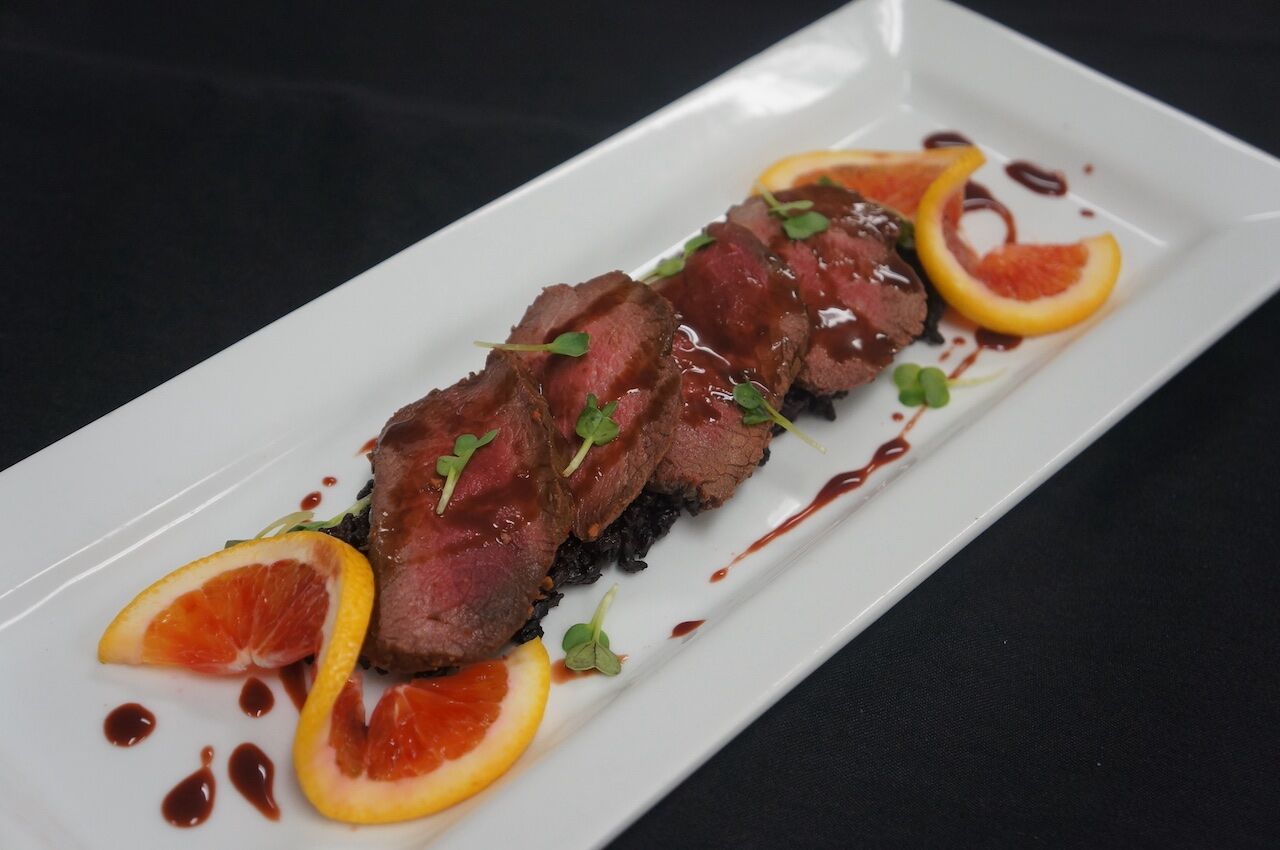
Photo: Andy Bonnet/Rubaiyat
When you arrive at Rubaiyat in Decorah, expect to spend the majority of your evening there. Chef Andy Bonnet has created an experience that’s as close to food meditation as it gets — you’re invited to sip, savor, and sit back, one course at a time, letting each bite be its own mindful experience.
That’s the reason behind the name: The Rubaiyat of Omar Khayyam was written nearly 1,000 years ago in Persia, a testament to enjoying life through food and wine. But it’s not Persian fare you’ll be savoring — instead, picture noshing on local oyster mushrooms or duck bacon and sweet-corn wontons. You could call it American, but truly, it’s Iowan.

